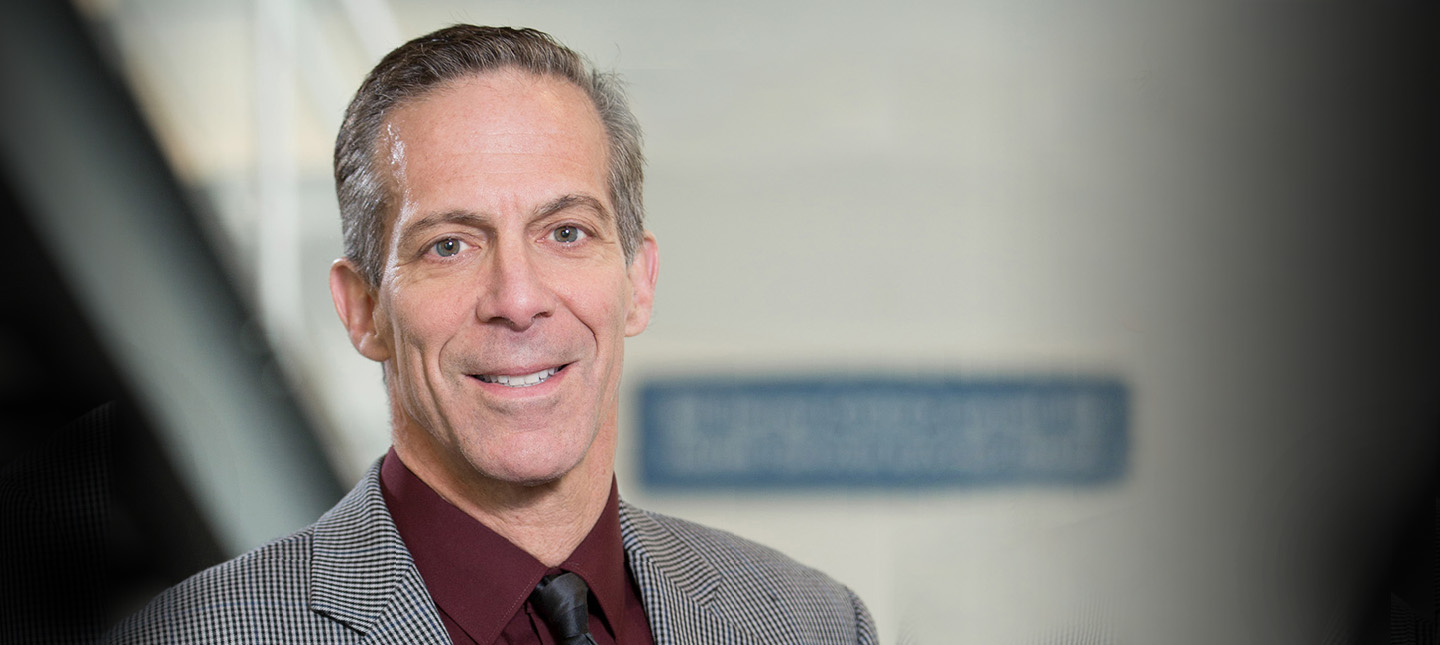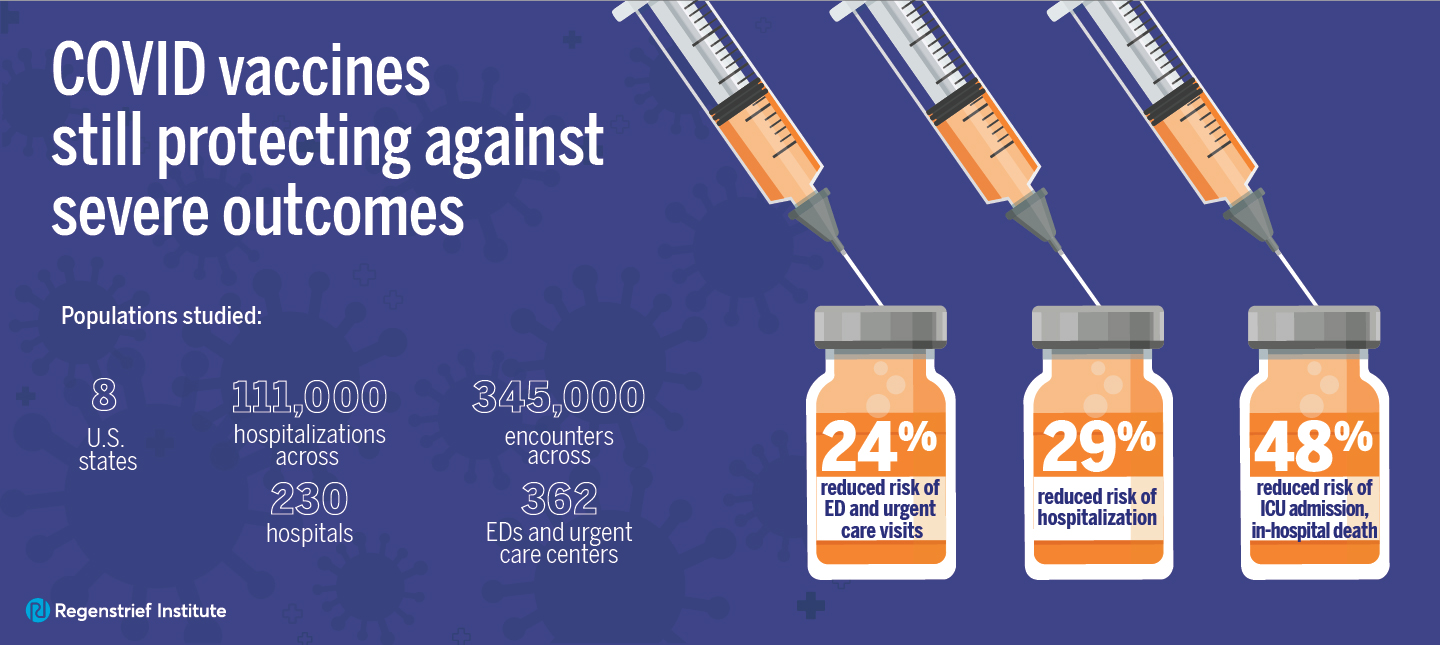The National Diabetes Prevention Program has led the way on reducing diabetes in America. Learn about how it got its start.
Featuring: Ann Albright, M.D.; Sharon Edelstein; David Marrero, M.D.
Transcript
Phil Lofton:
Hey, everybody. So far this season, we’ve looked at diabetes from the historical view and the personal view, and heard about the complications associated with diabetes. In this episode, we’ll be looking at the ways that scientists have explored preventing diabetes. We’ll also hear about a landmark study, the Diabetes Prevention Program, and how it’s affected health in America. Welcome to The Problem. I’m your host, Phil Lofton.
Ann Albright:
Diabetes has been on the rise for the last two decades, as you look at prevalence, meaning total number of people with diabetes, and incidents means basically year to year view of new cases. And when we look at the last two decades, it has been on the rise. Fortunately, for the first time in the last two decades, we are now seeing a reduction in new cases of diabetes and a leveling of prevalence.
And that’s good news, that’s encouraging. It means the things that we are working on are starting to have an impact. But you have to look at that cautiously because not everyone is experiencing those improvements, and so it is important not to sort of able to paint every population. We still have significant health disparities and significant concerns, but it is encouraging and we should be encouraged by that.
Phil Lofton:
That’s Dr. Ann Albright, the director of the Division of Diabetes Translation at the Centers for Disease Control and Prevention, commonly known as the CDC. Over the course of her career, she’s worked hard to reduce diabetes in America. One of the biggest efforts that she’s been associated with is the national diabetes prevention plan, a program that’s been rolled out across the nation and has helped countless people improve their health. The program is based on a landmark research study called the Diabetes Prevention Program. Here’s one of the lead scientists from that project, Dr. David Marrero.,
David Marrero:
We show that a modest change in the way you approach the consumption of food could have a huge impact in the development of type 2 diabetes. That was the big outcome of that trial and a remarkable finding, twice as effective as a medication that was also being compared. The issue then is, we just need to figure out how to get people to lose a modest amount of their body weight and to keep the weight off. The challenge has become that it is difficult to get, first, people to participate in it, and second, to do it for long periods of time. I can get anybody to lose weight in a month, right, but keeping that weight off and staying at a lower weight is much more challenging and it has become difficult.
Phil Lofton:
Sharon Edelstein, now a lead research scientist at the George Washington University’s Biostatistics Center, was a biostatistician on the study 27 years ago.
Sharon Edelstein:
I was hired back in 1994, which is always hard to believe, that’s been a long time, to work on a study that, at the time, was unnamed, but became the Diabetes Prevention Program, DPP. The DPP was a huge clinical trial of 3,200 participants that was designed to evaluate whether a lifestyle intervention or the medication Metformin could prevent diabetes and very high-risk adults compared to a placebo. So a placebo is an inactive pill.
One thing that’s really important in clinical trials is that you try to mask your participants as well as your study investigators to their intervention, but it’s really hard to mask people to a lifestyle intervention, so of course, we made no attempt to do that. So one third of the participants got the lifestyle intervention, but they were unmasked. They were masked to their outcome, outcome being diabetes, but they were unmasked to the intervention. But the other two groups both got pills, and the pills were designed to look alike.
Phil Lofton:
That lifestyle intervention was 16 sessions aimed at reducing weight by 7% and increasing exercise to 150 minutes a week. We might say that reducing weight and increasing exercise are obviously the best ways to reduce all manner of disease, but you need scientific studies like the DPP to make statements about what is and isn’t effective.
Sharon Edelstein:
So the people who got the active Metformin and the people who got the inactive placebo didn’t know which they were getting. That study went on for just short of five years and was stopped early because the results were really so astounding that an external data safety and monitoring board said, “You got to get this out there.” And what was astounding was that the lifestyle intervention prevented diabetes at such a high rate, much more than we had predicted before the study started, that they really felt we had to get the word out, not only to the world and get people doing a lifestyle intervention, it really did work, but also to the study participants. It was very important that the participants, especially in the placebo group who had been getting nothing, were told that this works and get offered the intervention, which is what happened.
Phil Lofton:
But just seeing those initial reactions to the intervention wasn’t enough. Like Dr. Marrero said earlier, seeing an initial positive reaction is good, but seeing participants maintain a healthy lifestyle is even more important because if a solution isn’t sustainable, it’s not much of a solution.
Sharon Edelstein:
There was a really important need to continue following people for a while to make sure that we knew that what we were seeing early on was real, but it was. And over time, the differences between the three treatment arms just got bigger and tighter. The certainty of them got tighter and tighter and tighter. And after about four and a half years, this data safety monitoring board met, saw what we’d been seeing for the 10th time or so, and said, “Okay, now’s the time we have to stop.” So for the next few months, we actually put together this team of maybe five or six people, that’s all who knew the study results, put together a presentation.
Phil Lofton:
When the findings of the study were first announced to the study team, it was a once in a lifetime experience.
Sharon Edelstein:
We scheduled a meeting. I can picture it like it was yesterday. It was in 2001 in Denver, Colorado in the middle of the summer to go over the study results. And we told everyone we were having this meeting, it was sudden, clear your calendar, you’re coming to Denver in July. And we didn’t tell them what the results were, so they all get in the room and everyone’s nervous. This is going to be good or bad. Studies are often stopped because the results are bad or there’s nothing happening. So we presented the results and everyone applauded and tears were pouring down people’s faces.
We knew right away, this was a game changer. Before DPP started, there was this real question. Middle-age adults who were overweight and pre-diabetic, could you get them to lose weight? And if they did, is it too late? Does it even matter? And it mattered. It mattered a lot. People’s health improved tremendously, their blood pressure went down, their lipids went down, their diabetes stopped in its track, their blood glucoses went down, their health really improved. And it was just astounding to see it, and it was emotional. There were about 90 or a hundred of us in the room, and everyone remembers that moment.
Phil Lofton:
But even as big as these findings were, and make no mistake, they were massive, it would take quite a while for good science to become good practice.
Sharon Edelstein:
Two things happen then. First, after a study ends and there’s hundreds or thousands of clinical trials going on at any time, how does it get… the results get implemented? How does that happen? And it’s really difficult. It can be dozens of years sometimes before results from a clinical trial actually trickle down to medical practice. But in this case, there were many groups that tried to take the Diabetes Prevention Program lifestyle intervention, and implemented in group settings, so first at the YMCAs across the country. Some of the listeners may have done these diabetes prevention programs through the Y. And then ultimately, the National Diabetes Prevention Program, the NDPP, took the 16-session curriculum that we did and they did it nationally. So you can go online. The NDPP is being offered at all kinds of community centers and healthcare facilities all over the country.
So that was pretty exciting. That’s called translation, that the translation of this study happened in such a really big way. Many of us wear, years ago, pedometers, and now Fitbits or other activity trackers. A lot of that comes from this study, that we really found that people who were more active did better, and so activity really did matter. One of the ways that they tried to translate the study was through the 10,000 steps per day, which wasn’t something that we specifically targeted, but it was a great way to help people think about how much activity they were getting. And that, we still do today. I still make sure I get my 10,000 steps every day, and I assume many of your listeners do too.
What’s been interesting is that the drug Metformin was also very effective, and over time, it’s been shown to be… Its effectiveness has really stuck out. And yet, Metformin hasn’t really been picked up very much for the prevention of diabetes, so not that many people with pre-diabetes take Metformin. The real uptake has been with the lifestyle intervention.
Phil Lofton:
Ann Albright and her team at the CDC have helped turn the findings of the Diabetes Prevention Program into the National Diabetes Prevention Program, a massive national program that’s a partnership between the CDC, the YMCA, academic institutions, and several other organizations. At participating sites, people can enroll in a strong, evidence-backed lifestyle intervention.
Ann Albright:
The lifestyle intervention is a year-long program, and the first six months, participants meet once a week for about an hour, and in the second six months, they meet once a month for about an hour. What we have learned over the course of time, it is important to have a transition period so people just don’t immediately go from weekly to monthly. You get quite a bit of drop-off if you do that, and so we’ve been learning a lot of lessons over the time that we’ve been working to scale the National Diabetes Prevention Program lifestyle intervention. And it’s that year-long, again, for six months, second six months, one hour a week, one hour a month, with that transition linkage. And the participants in the program go through a structured lifestyle program.
But I want to say very quickly that it is a structured lifestyle program, but there is plenty of opportunity, and it really must happen, where there’s customization for the individual, what works for them, what meets them where they are, what is going on in their lifestyle. So what they’re learning are information about nutrition, real world information that’s going to be meaningful to them about physical activity, and also, really importantly, about things like stress reduction and coping behaviors, because there are certainly a lot of issues that people are wrestling with that can often be manifest in their eating habits or their difficulty in being active and eating, whether it’s access to food or access to safe environments to be physically active. So as people are going through this structured intervention, it does have a curriculum, but as I said again, with lots of ability for that coach and the participants to make sure that it’s working for them.
The other thing that goes on in this program is that you’re getting the support from not only your coach. You should get a lifestyle coach for a year, you also get the support from the others in your group that are going through this with you. And that’s really rich and exciting to see, that as people are talking to each other, somebody may have an issue with a particular part of their lifestyle change and somebody else in the group may say, “Well, I tried this and this really worked for me,” and when you talk to people who’ve been through the program, you’ll hear a lot of those comments. They say, “I’ve tried other things. It just didn’t work for me. But when I got to be in this program, it was very real world. It was very practical for me. I got to learn from others. I got to share with others.” It really has made a significant difference for people, and they are actually your best spokespeople for the success of this program, because it’s amazing to hear from people as they’ve gone through this program.
But it is important for folks to be aware, lifestyle change, changing any behavior change, takes time. And certainly, any of us, if we could, whether it’s tobacco cessation, or it’s medication management, or lifestyle in this case, those things take time, and people need to practice behaviors. They need to test and try things out. They’re going to backslide, and so then they need to be able to develop strategies for how to get back into it, and keep going, and to be able to cope with those things, and the other challenges that may be going on in their lives, helping figure out how to get them connected to social services and other things.
And all that goes on in this program, so even though to some, initially it may sound like, oh my gosh, a year-long program, holy cow, when you really look at the number of hours, as I mentioned earlier, it’s about 24 hours total. Yes, it’s spread out over a year, but that’s part of it. You’ve got to have an adequate dose and you have to have an adequate duration, and that’s been shown in trial, after trial, after trial. And so that’s, again, what’s important about this trial, or this science, and this intervention is that it has been shown to be effective. It’s been shown to be effective now for more than 15 years, and behavior change takes time. But when you boil it down to the actual number of hours that somebody is in the program, it’s a day. And if you could say to someone, “Would you spend 24 hours engaged in something if it was going to help you live a longer, healthier life, and very potentially, allow you to avoid type 2 diabetes…” We’ve gotten a lot of takers on that, and hopefully, we will continue to get millions more.
Phil Lofton:
With efforts like the National Diabetes Prevention Program and other prevention programs, we’re starting to make change. And according to Dr. Albright, there’s plenty of reason to be hopeful about America’s future with diabetes.
Ann Albright:
It is a bright future, in my view. Again, as someone who’s lived with type 1 diabetes for the vast majority of my life, I’m very optimistic. And I’m optimistic because we have excellent science, we have a lot of important work going on now, we have the National Diabetes Prevention Program, and it will be a brighter future. I feel like it is a future free of diabetes, a world free of the devastation of diabetes if we rise up and we pay attention to diabetes to a greater degree, that we talk about it, we have a national conversation about diabetes, we give it visibility, that we have all stakeholders, because every one of them has skin in the game.
Whether you’re an employer, whether you are a healthcare system, whether you are a CEO of a company, whether you are a healthcare professional, whether you are… no matter what your profession, no matter what your job is, no matter what your age, every single person has a stake in what’s happening in diabetes. And even if you don’t think it touches you now, just wait. What’s happening in diabetes with a third of the nation having it, you will be touched in some form or fashion, whether it’s a friend or neighbor, a family member, or you, yourself. And so, we have to pay attention and really take advantage of the tools and resources we have now, and to support further and greater research and implementation of research findings in diabetes. It is a potential bright future, and we can go into a very dismal future, or we can go into the most amazing future, which is a world free of the devastation of diabetes, and that’s where we need to be headed for.
Phil Lofton:
But it’s not enough to simply come up with the right solution, according to Dr. Albright. We also need to fix some of the societal issues behind diabetes and remove the stigma that might keep people from receiving the care that they need.
Ann Albright:
We are so much closer to discovering things that are going to, hopefully, one day, wipe diabetes off the face of the earth. But diabetes is a condition in which there is stigma and blame, and we have to rise up and really shift the conversation about that, as we have in HIV/AIDS and as we are doing in the opioid crisis. Diabetes is on par with those for our nation. When you look at numbers of people, the catastrophe that it causes, the devastation, the lives lost, the cost, all of those things actually put diabetes right front and center for our nation to take on as another very critical health issue.
And if you address diabetes, you are addressing heart attack and stroke, forms of cancer, blindness, amputation, dementia, kidney failure. You are addressing all of those other health conditions, and so it is really important that we give diabetes it’s due in our nation and pay attention, give it visibility, get it out in front of people, talk about it, talk about what can be done to help people prevent or delay, and help people who develop it to not be afraid to talk about it, not be afraid to be able to acknowledge that, yes, I have this condition that often solicits blame from other people, and to just say, “I am not going to take that, I am going to take advantage of what I can do to take good care of myself.” And it’s about time that we really rise up and do that. Well, it’s passed time.
Phil Lofton:
Join us next time, when we continue our look at diabetes and talk about access to care and how medical systems can complicate diabetes outcomes. We’ll see you then on The Problem. Music this episode was by Everlone and Blue Dot Sessions. Our theme and additional musical cues were written and performed, as always, by verifiable results. The Problem is produced at studio 134 in the Regenstrief Institute in Indianapolis, Indiana, where we connect and innovate to provide better care and better health.
Learn more about our work and how you can get involved at regenstrief.org and see bonus content from this episode, including sources, pictures, and more at regenstrief.org/theproblem. The Problem is written, hosted, edited, and produced by me, Phil Lofton, with additional editing by Andi Anibal, John Erickson, and Jen Walker. Web design and graphics are by Andi Anibal, and social media marketing is by Jen Walker. Special thanks to this season’s advisory council, including Tami Hannon, Janet Panoch, Lisa Yazel, Julie Pike, and Tiffany Doherty.







